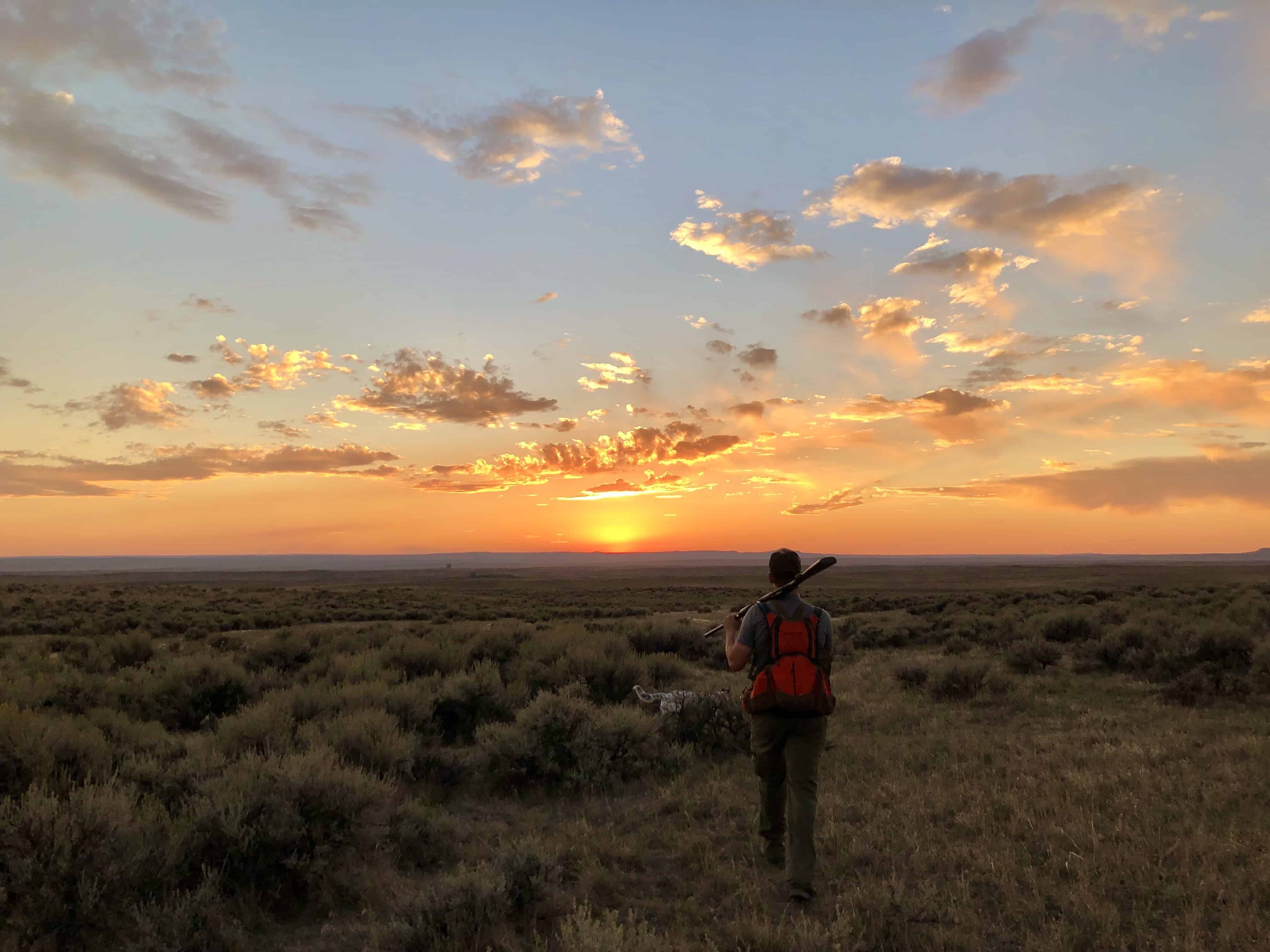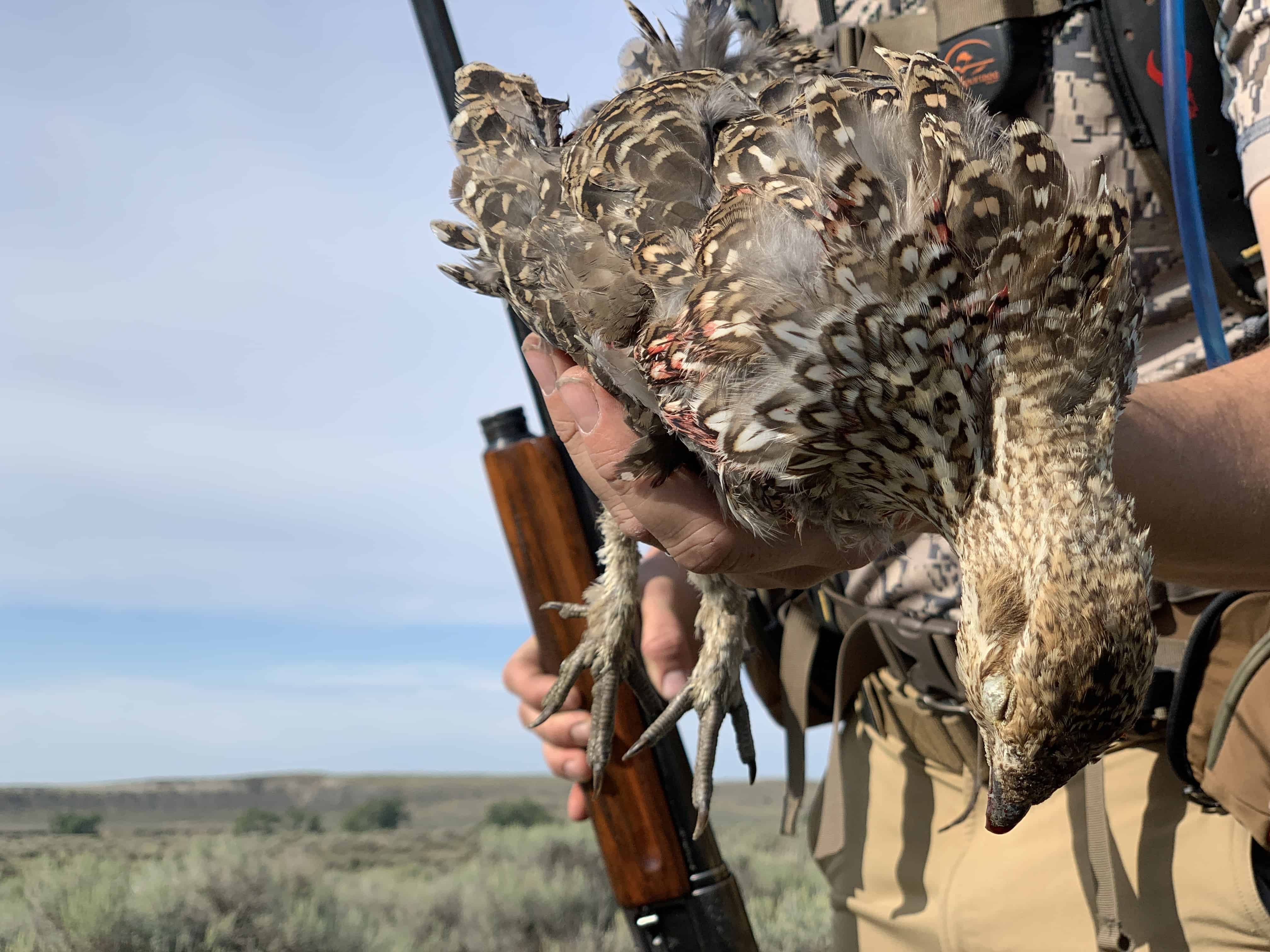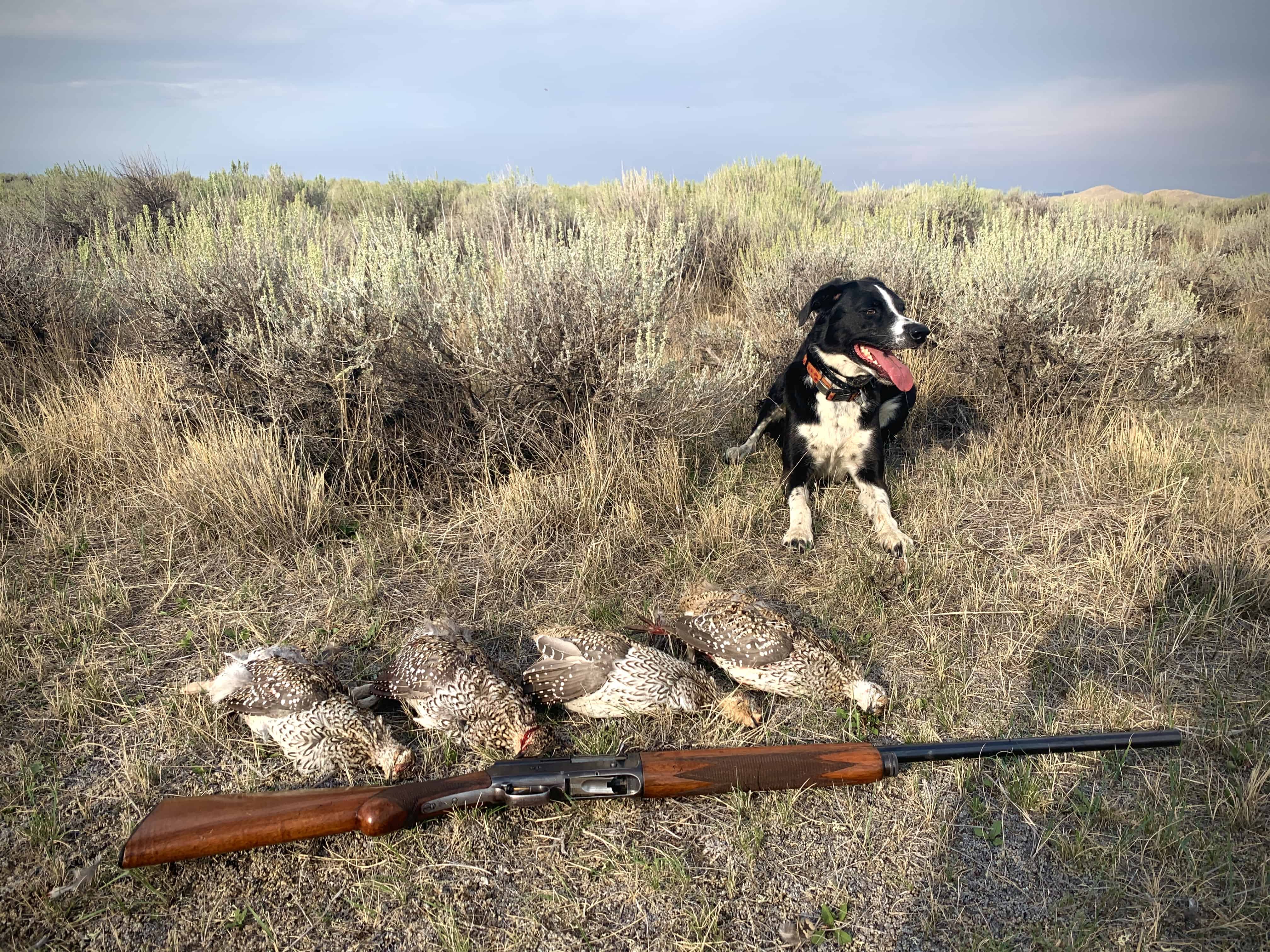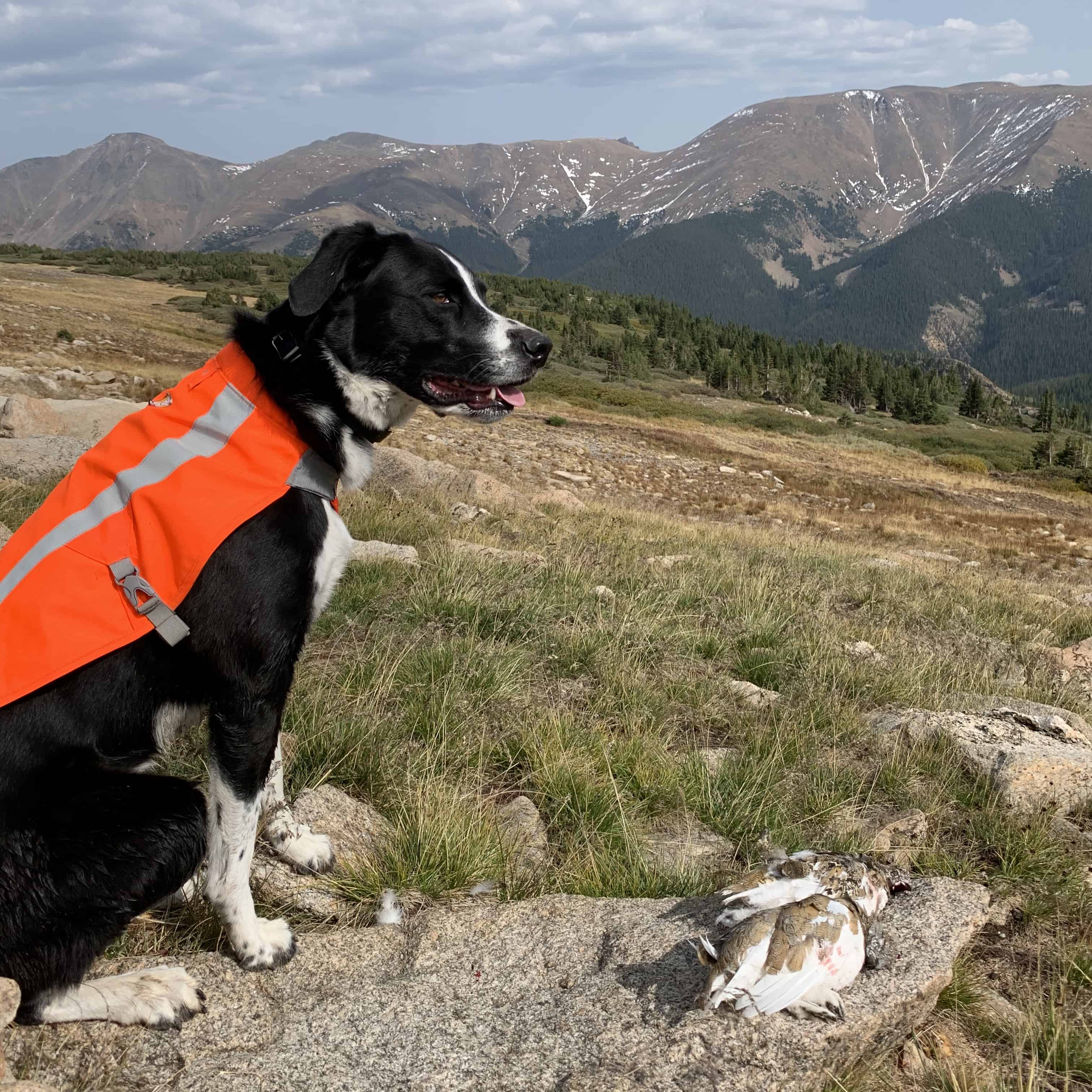
Frozen in what could be defined as the perfect point, he quivers with excitement. Relying on the hours of training he endured to get to this point. As you and your hunting partner close in, shotguns at the ready, the grouse flush. In fractions of a second, shots are fired and two birds lay dead. The dog goes out and gently picks the bird up bringing it back and drops it in your hand. Beautiful.
I assure you that is not how a bird hunt with mutts plays out. Let me explain.
The Roster
Sage. Well into her fourth trip around the sun, Sage is a daddy’s girl and the biggest sweetheart on the planet. Adopted from a shelter in Mississippi, she was delivered to us near our New Jersey home. Labelled as an English Shepard/Lab mix we immediately relabelled her as an English Setter/Lab mix to better fit our hunting plans. We really didn’t have thoughts of turning her into a bird dog. But as a puppy she would sharply change course on walks around the neighborhood, following the scent of whatever bird crossed her path. So it began.
She is a natural retreiver. To put it simply, fetch is her game. And she is damn good at it. While fishing, every stick on the river bank becomes an object that has to be hurled into the water in order to keep her happy. I started by taking her on dove hunts that involved walking through head high corn flushing doves here and there. At five months she retrieved her first dove, bringing it back to me and gently dropping it in my hands.

This took us on an unexpected path. She was “birdy.” Meaning she smelled birds, and would alter her course because of it. She also listened really well, making a good hunting partner. After moving to Colorado, she quickly learned that rabbits weren’t what we were after and became fully focused on birds. Her first true bird hunt put some high altitude Colorado ptarmigan on the dinner plate. It wasn’t until we moved to Montana that she really excelled as a flusher, promoting from hunting partner to hunting dog.
Rosie. She’s a different story. A Blue heeler/cattle dog mix rescued from a shelter near Billings, MT. She’s a rez dog with less than a year on this planet and her Crow Indian blood is all about keeping her tribe together. Her tribe is her sister Sage, my wife Abbie, and I. While taking her out on walks in the plains of Montana, she had a need to circle all of us and keep us in a general area. I immediately thought about how this would play into our hunting strategy.
Our mutt hunting team was cute to those with full bred bird dogs. But we killed it, regularly hitting bag limits and having a great time doing it.

Developing a Strategy
Developing a strategy is important for those hunting with mutts. First and foremost, your dog needs to be a good listener and come when called. Next, you need to have an idea of the breeds that you are dealing with and what they were bred for. There are a lot of hunting dog breeds that people don’t realize are hunting dogs. Rat terriers come to mind. Lastly, you need to understand their body language. That can only be learned by exposing them to birds. Learn as you go.
As for us, one dog definitely smells birds and the other panics when we’re not close together. How do we make this work? As my wife and I walk side by side in the offseason, Rosie playfully followed Sage excited to explore the plains with her big sis. Once Abbie spread out to thirty yards and walked parallel to me. Our strategy developed. Pure panic.
Rosie went from playing follow the leader to herding. The kind of herding that can only be done with hundreds of years of generational instincts built into her. Our plan would be to work Sage at forty yards and under, while spreading out so that Rosie would cover all of the ground in between trying her best to keep us all together.
Use coupon code KTG10 to get 10% off your order of $150 or more at Brownells.
Holding Up Your End of the Bargain
You can’t solely rely on your dogs to find you birds. This applies on both a large and small scale. First, you have to take them to an area where the birds are present. Second, you need to know what those birds are doing at what points of the day. Understand what kind of cover they are going to be in and help your dogs find success.
Know when to stop. If your dogs are like mine, they will run themselves to exhaustion before taking a break. You need to know when it is a good time to sit down and take a 10-15 minute break with them. Allowing them to get rehydrated and catch their breath.

Application
Miles of rolling sagebrush laid out in front of us, our first trip with the team. Sage immediately knew what we were there for. We spread out and started our path through the sagebrush. Zig zagging back and forth in front of us Sage worked the cover with her nose while Rosie bounced between us.
Sage’s course took a hard left turn and her nose glued to ground while her tail wagged ferociously. I hurriedly picked up my pace, resembling someone uncomfortable with running trying to make their connecting flight. Rosie panicked as her herd decided to head off course. Fifty yards after Sage’s sharp turn she flushed a Sharptail Grouse. I fired twice, the first taking a feather or two and the second wounding it.
As it hit the ground 75 yards from me, Sage was right on its tail and caught it as it tried to run off. She brought it back to me and laid it down with a mouthful of feathers. Rosie pressed her nose to the bird soaking in all the scents of this mysterious creature, learning… That bird would have definitely gotten away had it not been for Sage and her countless hours playing fetch.
This was the second of three Sharptail for the day, all unfolding similarly. Rosie started to understand what we were doing. While I doubt she will ever use her nose to find these birds, there is no telling what she might bring to the table when she knows what we are after.
In my mind, this was the peak of my bird hunting career thus far. Sage did everything like she was supposed to, only to complete the task and go right back to hunting. More excited than she was before. It will only get better from here.

Keeping a Journal
I keep a journal writing any noteworthy thing that I notice with the dogs’ development. Each outing I hit a milestone with each of them. The last hunt Sage quit following the jackrabbit sign and Rosie now identifies fresh bird scat and does her best to use it as a cover scent.
Hunt!!
This isn’t me bragging about having an A++ grade mutt hunting team. Instead it is to encourage people to get out and hunt regardless of their situation. You don’t need a pure bred bird dog to have fun bird hunting. While you will definitely see more success with one, it isn’t necessary. This is my excuse to be in the woods every waking moment regardless of my situation.
Learn how your dog works in the woods and use it to your advantage. If something is in season there is no excuse to sit at home on your phone. Get outside and hunt!


Written by: Kurt Martonik
Kurt is a Gunsmith, Reloader, Hunter, and Outdoorsman. He grew up in Elk County, Pennsylvania, where he became obsessed with the world of firearms. Following high school, Kurt enlisted in the United States Air Force as a Boom Operator, where he eventually rose to the position of Instructor. After his military service, he attended the Colorado School of Trades(CST) in Lakewood, CO for gunsmithing. Following graduation, he accepted a job at C. Sharps Arms in Montana, where he worked as a full time stockmaker and gunsmith.
Note: Most of the links in this article earn me a small commission at no cost to you. If you use these links, it helps me continue to put out free content for viewers. Thank you for the support!
Great article brother!
Thanks Sean!